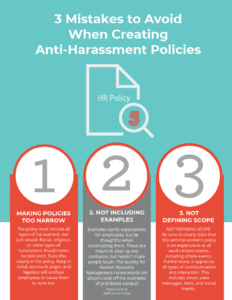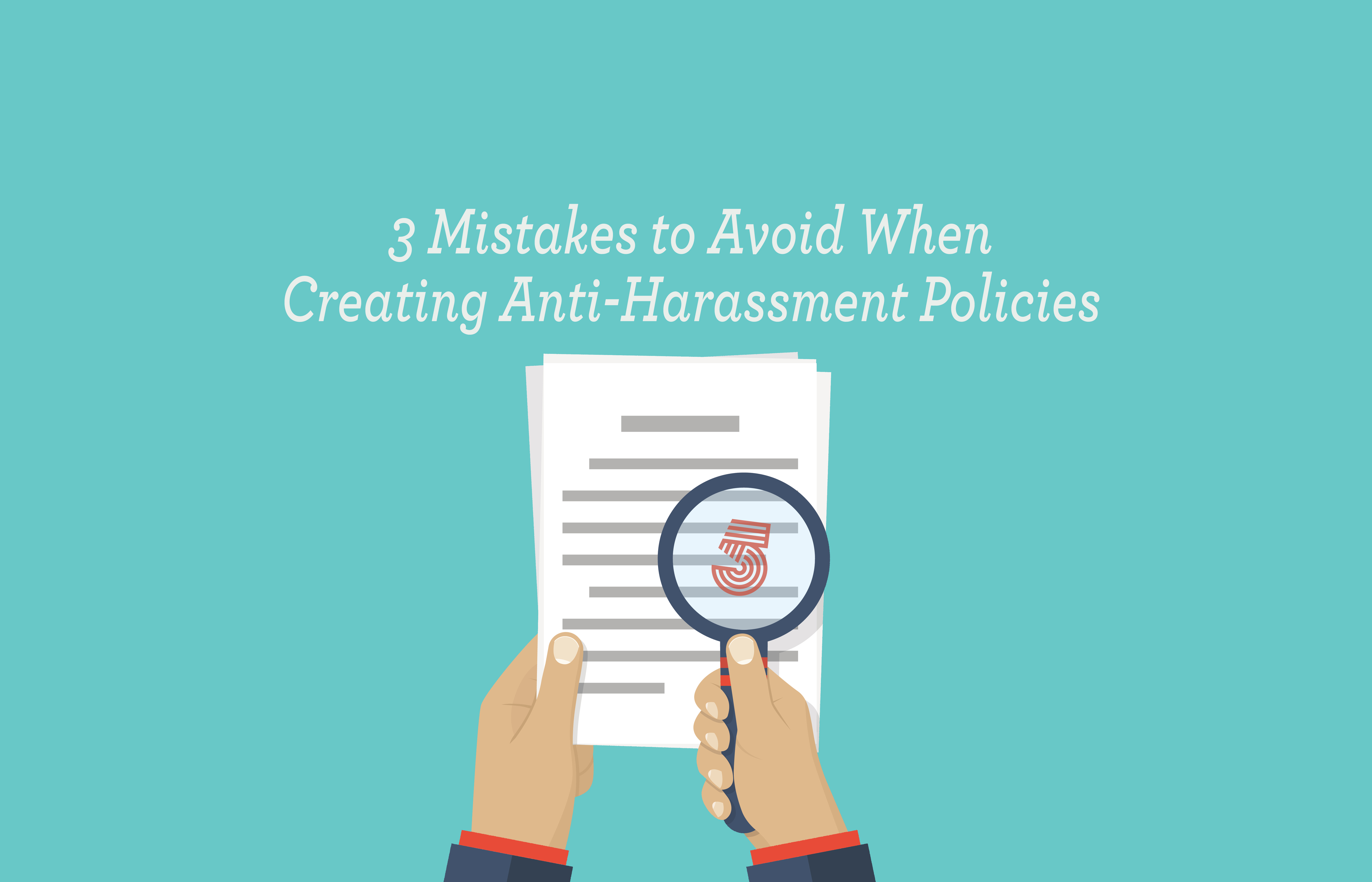
anti harassment policyHarassment headlines hit newsfeeds on a weekly basis. For example, accusations about Hollywood elite like Harvey Weinstein were quickly followed by a host of other big entertainment names that continue to drip into newsfeeds today.
Not confined to the entertainment industry, harassment can happen at any time and at any place of work. This is the stuff that keeps human resource professionals up at night. Whether you’re running an SMB or a Fortune 500 company, it’s important to vet carefully during recruiting and create a culture that embraces anti-harassment policies.
If you hire a person with a history of harassment and/or take steps to shield that individual from consequences due to action taken on the job, expect to face big problems. A lawsuit is just the start. A tarnished brand reputation is not so easy to recover from, and if bad enough, can put entire companies under.
Just this month, reports surfaced that a Trump senior staffer was hired even though he had a history of abusing his ex-wives. The news also criticized Hillary Clinton for protecting a political adviser who was accused of sexual harassment. These stories reflect poorly on both Republican and Democratic leaders.
Of course you want to avoid negative headlines and always provide a safe, caring environment for employees. One of the best proactive things you can do is create a clear, concise anti-harassment policy that’s accessible and easy to understand for all employees.
When creating or revising yours, make sure to avoid these three common mistakes.
1.Making Policies Too Narrow
The policy must include all types of harassment, not just sexual. Racial, religious, or other types of harassment should never be tolerated. State this clearly in the policy. Keep in mind, too much jargon and legalese will confuse employees or cause them to tune out.
2. Not Including Examples
Examples clarify expectations for employees, but be thoughtful when constructing them. These are meant to clear up any confusion, but needn’t make people blush. The Society for Human Resource Management recommends employers lead off the examples of prohibited conduct with something like: “The following behaviors are unacceptable and therefore prohibited, even if not unlawful in and of themselves.”
The importance of this phrasing is that it makes it clear that certain behaviors will not be tolerated, even if they haven’t reached a level violating federal or state laws. Employers will want to try to remedy problems early on, before they become extensive (and illegal). This type of wording in an anti-harassment policy will help clarify this stance.
3. Not Defining Scope
Be sure to clearly state that this anti-harassment policy is an expectation at all work-related events, including offsite events. Furthermore, it applies to all types of communication and interaction. This includes email, voice messages, texts, and social media. Finally, note that all violations to the anti-harassment policy will be taken seriously, investigated thoroughly, and corrective action will occur swiftly, if necessary.









